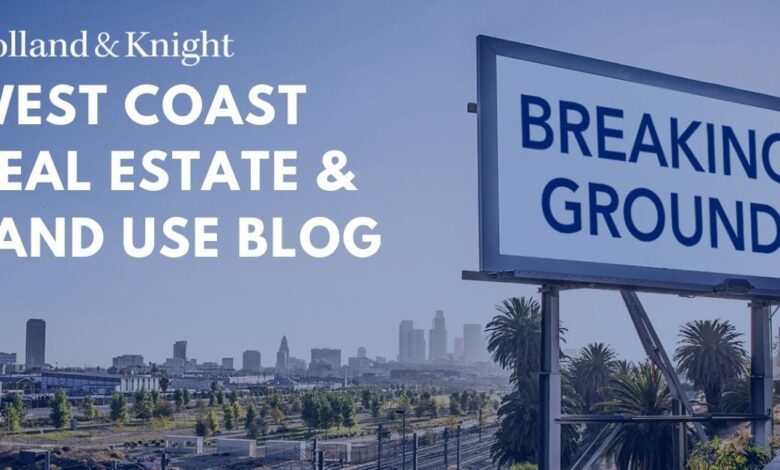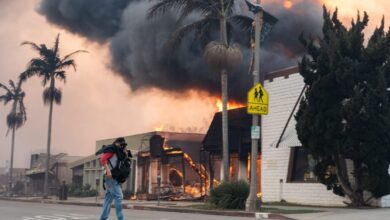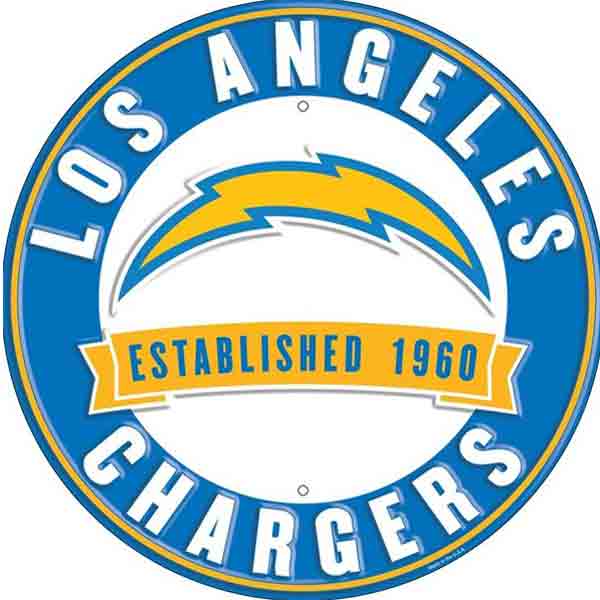Orders Addressing Rebuilding After Southern California Fires | Insights

In response to the catastrophic wildfires that devastated communities throughout the City and County of Los Angeles, a number of agencies have released orders to address the monumental rebuilding efforts. The following summarizes some of the initial executive orders issued by California Gov. Gavin Newsom and Los Angeles City Mayor Karen Bass.
One notable exclusion in many of the executive orders is corresponding authority to expedite permitting for the infrastructure that will need to be rebuilt to serve the damaged communities.
Gov. Newsom’s Executive Order on Debris Removal
California’s recovery and rebuild efforts after prior catastrophic wildfires demonstrate that the tasks of addressing debris removal and rebuilding will require the coordinated efforts of local, state and federal agencies. In addition to action from the impacted communities themselves, action from a range of state environment, waste management and natural resource agencies, as well as the Federal Emergency Management Agency (FEMA) and the U.S. Environmental Protection Agency (EPA), was needed.
Recognizing the importance of recovery and community restoration after numerous wildfires devastated communities in and around the greater Los Angeles area, Gov. Newsom issued directives to expedite removal and cleanup of debris from impacted properties. Among other actions, Executive Order N-2-25 (EO N-2-25), issued by Gov. Newsom on Jan. 8, 2025, suspends statutes, rules, regulations and requirements under the jurisdiction of the California Environmental Protection Agency (CalEPA) and the California Natural Resources Agency (CNRA).
This action is to be taken to the extent necessary to:
- expedite the removal and cleanup of debris from the fires
- address other impacts associated with that debris
- implement any restoration plan needed to mitigate the effects of the fires
- conduct other fire recovery activities
The governor’s executive order also acknowledges the public interest in environmental protection. EO N-2-25 further directs that activities conducted under the suspension must be in accord with “the State Environmental Protection Plan, or a comparable plan describing how such actions will balance expeditious fire recovery and environmental protection.”
On January 12, 2025, Gov. Newsom further addressed the need to expedite removal of hazardous and other debris from impacted properties with Executive Order N-5-25 (EO N-5-25). Acknowledging that rebuilding efforts cannot begin until hazardous and other debris have been removed, EO N-5-25 directs the California Governor’s Office of Emergency Services (CalOES), with other state agencies and departments, to work with impacted communities and FEMA to develop a plan for removing debris and executing contracts for debris removal. Specifically, EO N-5-25 directs CalOES to:
- consult with CalEPA and other agencies and departments
- engage with impacted communities, including Los Angeles County, and the cities of Los Angeles, Malibu, Pasadena and Sierra Madre
- engage with FEMA
- develop a comprehensive plan to “expeditiously remov[e] debris,” “allow the rebuilding process to commence as quickly as possible,” and facilitate “prompt execution of contracts with debris removal vendors with a proven track record of successfully delivering services on a timely and cost-effective basis.”
For FEMA, under the current Presidential Major Disaster Declaration, Los Angeles County is eligible for assistance with debris removal and emergency protective measures, including direct federal assistance. Federal assistance is available for 100 percent of eligible costs for a period of 180 days, within the first nine months of the disaster period. Separately, all areas within the state are eligible for federal assistance under the Hazard Mitigation Grant Program (HMGP).
With EO N-5-25, Gov. Newsom also addressed concern that “burn scars” from the fires will result in devastating flash floods, mudslides and flooding caused by debris flows. EO N-5-25 directs CalOES, the California Department of Forestry and Fire Protection (Cal Fire) and other state agencies to develop a plant the mitigate the risk of and respond to “any flooding, mudslides, or debris flows” from “significant winter storms” in the greater Los Angeles area in the next weeks and months. The other state agencies include:
- Department of Water Resources (DWR)
- California State Water Resources Control Board
- California Department of Fish and Wildlife (DFW)
- California Geological Survey (CGS)
- California Conservation Corps (CCC)
Gov. Newsom’s Executive Orders Suspend CEQA and California Coastal Act
On Jan. 12, 2025, in an effort to alleviate various obstructions that property owners would likely face as efforts to rebuild communities impacted by the Southern California wildfires commence, Gov. Newsom issued Executive Order N-4-25 (EO N-4-25). This executive order suspends the California Environmental Quality Act (CEQA) and the California Coastal Act with respect to development projects that demolish, repair, restore or replace property lost due to the Palisades, Eaton, Hurst, Lidia, Sunset or Woodley Fires. To qualify for expedited review under this new executive order, a development project:
- must be proposed for the purposes of repairing, restoring, demolishing or replacing property or facilities substantially damaged or destroyed as a result of the Palisades, Eaton, Hurst, Lidia, Sunset or Woodley fires
- must be located in substantially the same location as the property or facility to be repaired, restored, demolished or replaced
- must not exceed 110 percent of the footprint and height of properties and facilities that were legally established and existing immediately before the emergency
EO N-4-25 also suspends California Penal Code Section 396 subdivisions (c) and (d) until Jan. 7, 2026. These provisions restrict price gouging for building materials, housing services, emergency supplies and other items for 30 and 180 days, respectively, following the governor’s declaration of a state of emergency. By suspending Penal Code Section 396 subdivisions (c) and (d) until 2026, this executive order attempts to preserve a longer-term pathway to rebuild for impacted communities.
Additionally, EO N-4-25 also imposes affirmative requirements on relevant state agencies.
These include the following:
- The Department of Housing and Community Development (HCD), in collaboration with the Office of Land Use and Climate Innovation (LCI), CalOES and the California Department of General Services (DGS), shall prepare a report for the Governor that identifies “other state permitting requirements … that should be considered for suspension” if those requirements are found to “unduly impede” reconstruction efforts. This report shall be updated every 60 days.
- HCD, in collaboration with the DGS, the Office of the State Fire Marshal (OSFM) and the California Energy Commission (CEC), shall produce a report containing recommendations regarding “any provision of the Building Standards Code … that should be suspended … in order to facilitate rapid, safe, and cost-effective rebuilding and recovery” for reconstruction projects.
- HCD shall coordinate with local governments to identify and recommend procedures to establish rapid local permitting and approval processes, and these recommendations shall advance the ultimate goal of enabling a project to receive all necessary approvals and permits within 30 days. HCD shall provide an initial report to the governor identifying recommended updates to local government procedures within 60 days and HCD shall continue to update that report every 60 days thereafter.
City of Los Angeles Executive Order on Permit Expediting
In response to the catastrophic wildfires that devastated the Pacific Palisades1 community of the City of Los Angeles (City), Mayor Bass issued Emergency Executive Order No. 1 on Jan. 13, 2025 (LA Order). The LA Order directs several City agencies and departments to establish programs and task forces for the coordination of debris removal and watershed hazard mitigation in wildfire-impacted neighborhoods. Primarily, however, the LA Order attempts to streamline the approval processes for reconstruction of properties damaged by wildfire, mirroring the focus of the governor’s orders. Specifically, the LA Order seeks to facilitate rebuilding in these areas by establishing:
- Dedicated “permitting centers” located in burn areas and staffed by representatives of the City’s planning, building and safety, transportation, public works, water and power, fire and housing department
- A “development services strike force” charged with further streamlining of development administration consistent with the LA Order, and identifying and addressing obstacles to expeditious reconstruction
- Expedited permit review, directing all applicable City departments to accomplish initial permitting reviews for reconstruction within 30 days of submission of a completed application. The LA Order also dictates that all permitting reviews shall be conducted simultaneously – not sequentially – by City departments (in contrast to the City’s customary process with respect to some departments). Building inspections for covered projects must be conducted within two business days of a submitted request, and clearances and utility releases related to permit applications, certificates of occupancy or temporary certificates of occupancy must be processed within five business days for rebuild projects.
- A specific definition of “Eligible Projects” that is similar to the governor’s Executive Order N-4-25. Under the LA Order, “Eligible Projects” include reconstruction efforts in the same location as structures lost to wildfire that seek to rebuild no more than 110 percent of the square footage, height and bulk of improvements to be replaced, to be put to the same use. Building permits must be obtained within seven years and improvements completed within three years of permit issuance. Under the LA Order, non-conforming uses and buildings that meet the definitional requirements of Eligible Projects shall be approved notwithstanding any non-conformance requirements or standards under existing City codes so long as the reconstruction project observes the same nonconforming use, yards, height, floor and lot area, density, loading, parking and other site requirements as originally approved or permitted, further provided that applicable building codes are complied with, and no encroachment into areas planned for street widening or extension is proposed.
Under the LA Order, Eligible Projects are exempt from the City’s discretionary review processes otherwise required under the City’s planning and zoning code, including any otherwise applicable specific plans. Applications to rebuild are to be processed using the “streamlined ministerial review process currently used for projects under Government Code Section 65913.4” (i.e. Senate Bill 35). The LA Order further dictates that 1) “haul route” approvals for Eligible Projects shall be approved ministerially (currently the City’s code requires public hearings and discretionary review of such approvals) and 2) discretionary processes otherwise required under procedures applicable to the City’s Department of Public Works are not required for Eligible Projects.
The LA Order also:
- confirms the Coastal Zone exemption for Eligible Projects contemplated by the governor’s order
- waives the requirements of the City’s “all electric” building code for Eligible Projects
- provides that demolition of any structure damaged or destroyed by the wildfires shall not require demolition permits
- requires the Los Angeles Department of Building and Safety (LADBS) and Department of City Planning to identify and inspect properties that have local, state or federal historic designations and publish a list of the statuses of said properties after safe access is made available to impacted areas
- allows the use of recreational vehicles, tiny homes, modular structures and mobile homes on Eligible Project sites during reconstruction for three years or while an active building permit is applicable
- expedites the issuance of temporary certificates of occupancy for multifamily projects near completion
- contemplates a “self-certification” mechanism to be accomplished by licensed project architects for Eligible Projects that are limited to reconstruction of a single-family structure
- directs City departments to issue guidelines for implementation of the LA Order within 30 days of issuance of the LA Order
- directs City departments to report in seven days with lists of additional relief needed from state and federal regulations and requirements, as well as federal funding needed for recovery and reconstruction contemplated by the order
For additional information or questions concerning the information covered in this article, please contact the authors.
Notes
1 Pacific Palisades is located within the jurisdictional boundaries of the City of Los Angeles; the other communities impacted by the January 2025 firestorms are located in other municipalities: Malibu, Topanga, Altadena, Pasadena, La Cañada Flintridge, Arcadia, Monrovia, Glendale, Sierra Madre and Acton.




